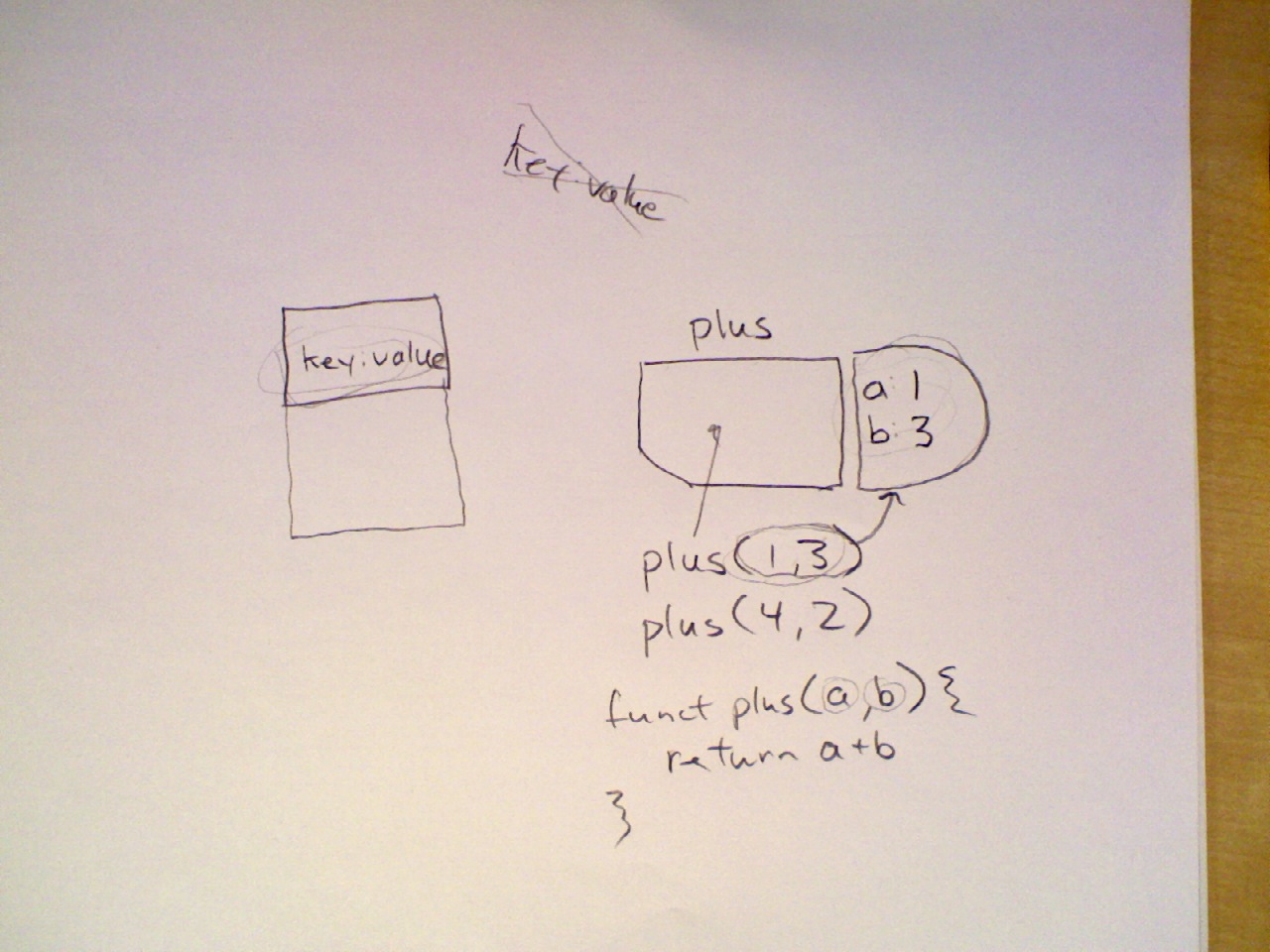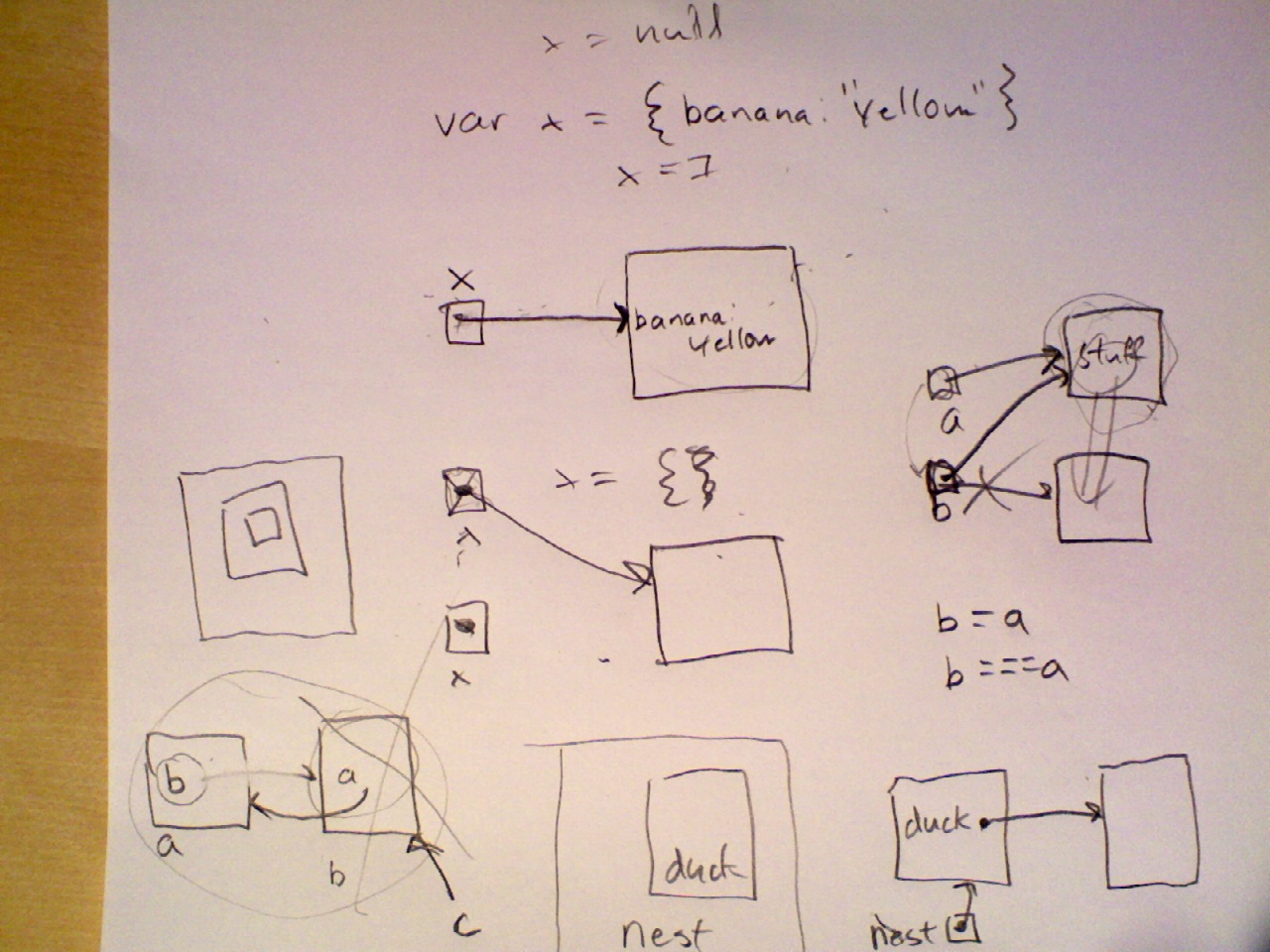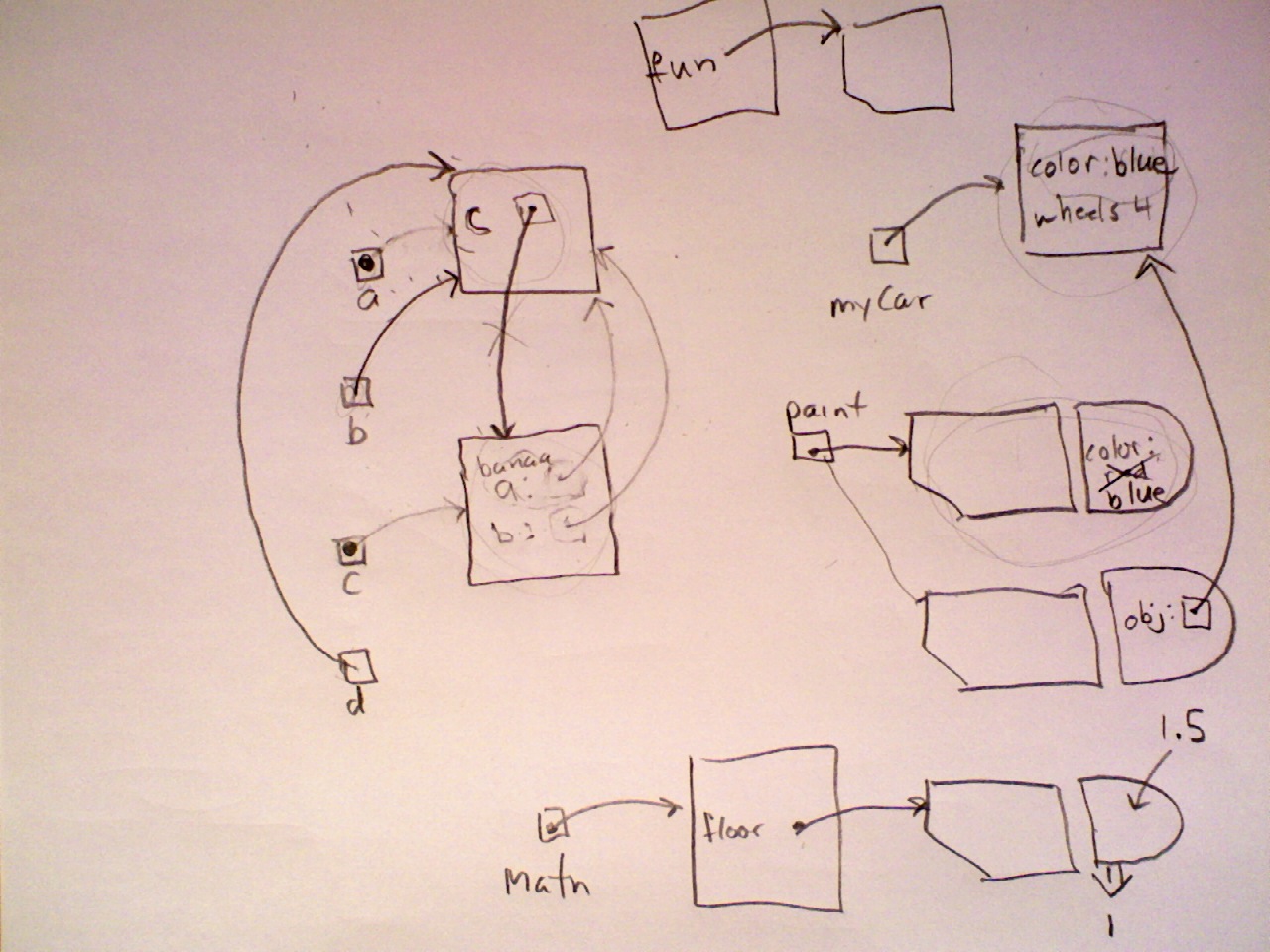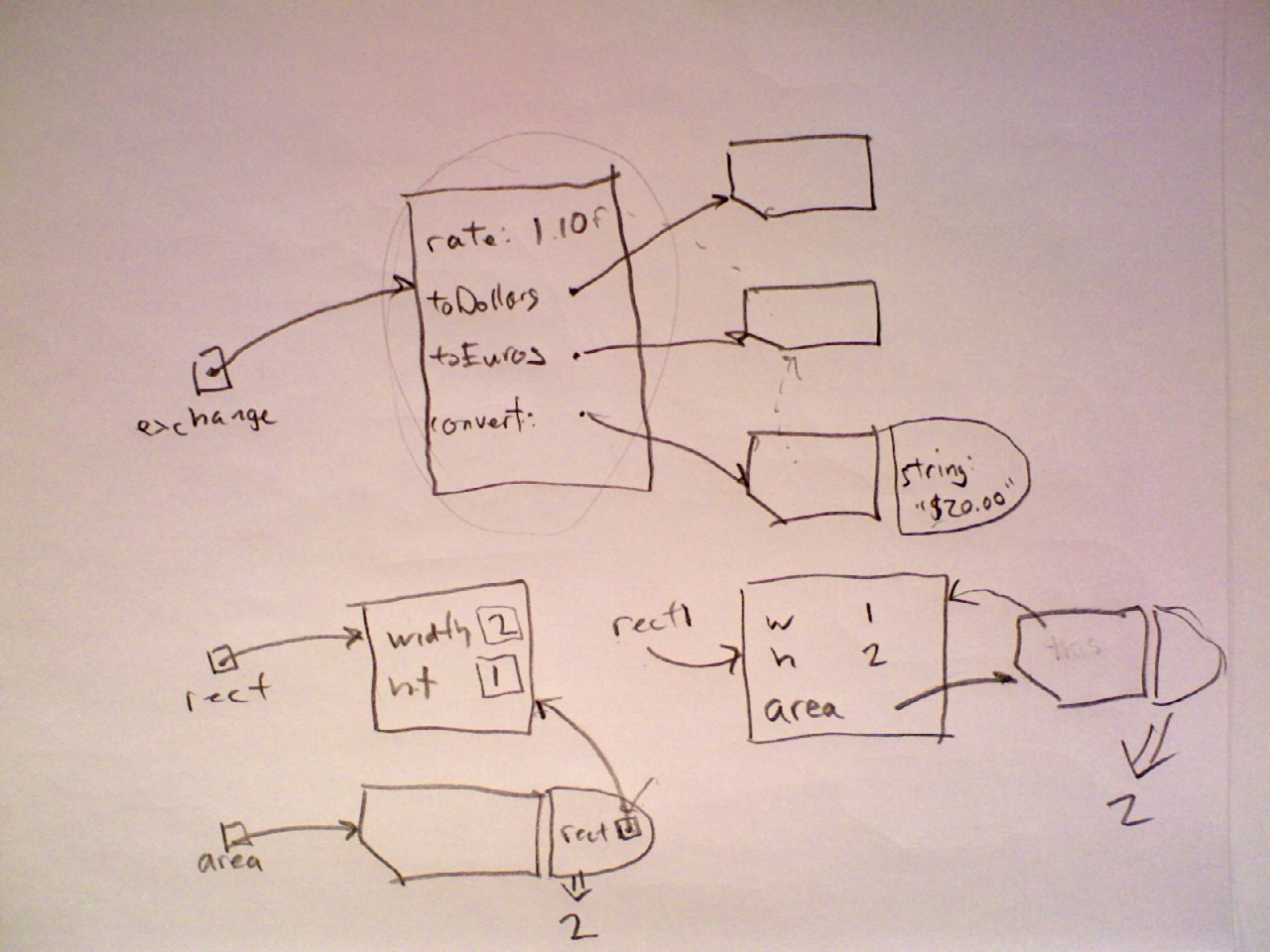CoreJS: References, Methods, and 'this'
29 Jul 2015Review: Properties vs. Variables
Discuss with your team the difference between variables and properties in each of the following behaviors:
Where they're stored
How they're created
What happens if they're used before being created
When and how they're destroyed
How they appear in expressions
Constraints on what they may be named
References
- How many objects remain after the following code runs?
var a={};
var b=a;
var c={a:a,b:b};
a.c = c;
var d=c.a;
delete c.a;
delete c.b;
a = null;
c = null;
Circularity
- Draw the data structure built by the following code:
var loop1;
var loop2;
loop1 = {link : loop2};
loop2 = {link : loop1};
loop1.link.link
- Now fix the code to produce two mutually-linked objects.
Toolkit Object Example
Here is a simple example of a Toolkit object, a currency converter:
var exchange = {
rate: 1.10, //dollars per euro
toDollars: function(euros) {
return euros * this.rate;
},
toEuros: function(dollars) {
return dollars / this.rate;
},
convert: function(string) {
if (string[0]==='$')
return 'E'+this.toEuros(string.slice(1));
if (string[0]==='E')
return '$'+this.toDollars(string.slice(1));
return this.toDollars(string);
}
};
exchange.convert('$20.00');
Index/dictionary Object Example
var dollarsPer = {
dollar: 1,
euro: 1.10,
pound: 1.56,
yen: 0.01, //NOT 123.98,
yuan: 0.16 //NOT 6.21
}
Toolkit Exercise
Modify the exchange toolkit to have one data property, a dictionary object listing all exchange rates, and two methods:
convertTo(amount,toUnit): convertamountof dollars into the equivalent intoCurrency;convertFrom(amount,fromUnit): convert 'amount' of foreign currency infromUnits to the equivalent in dollars.
It might be used as follows:
exchange.convertTo(20,"yen");
exchange.convertFrom(5,"euro");
Samples
Diagrams



